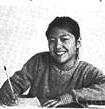阅读理解George Stephenson was born in 1781 in a poor family. He had to start work when he was only eight. When George was fourteen, he became his father’s hel-七年级英语
题文
| 阅读理解 George Stephenson was born in 1781 in a poor family. He had to start work when he was only eight. When George was fourteen, he became his father’s helper. He spent a lot of time learning about engines. And on holidays he often took one to pieces and studied each piece carefully. Soon he became a very good worker though he could not read or write. He began to learn the English letters when he was seventeen years old. Every day after he did twelve hours of hard work, he walked a long way to have lessons from a young school teacher. On his eighteenth birthday, he wrote his own name for the first time in his life. George invented many things in his life. The train was the greatest one among them. Today when we watch or take trains from one place to another, we will think of this great man -- George Stephenson. 小题1: In which year did George Stephenson start to help his father?
|
答案
小题1:C 小题2:B 小题3:C 小题4:A 小题5:D |
试题分析: 小题1:数字推断题,乔治1781年出生,14岁开始帮他爸爸,由此得到1795年 小题2:细节理解题,根据短文语句And on holidays he often took one to pieces and studied each piece carefully的理解,可知他是通过拆装机器零部件来学习的 小题3:细节理解题,根据对短文Soon he became a very good worker though he could not read or write的理解可知,他不久成了一名熟练工人 小题4:细节理解题,根据文中语句He began to learn the English letters when he was seventeen years old.的理解,可知乔治童年时没有上过学,直到17岁才会写第一个英语字母 小题5:综合理解题,通过对短文的理解可知,勤奋会导致成功 点评:本文是一篇人物传记,主要介绍了著名发明家乔治,童年时虽然没有上过学,但是通过自己的辛勤劳动和不懈努力,最后成为一名伟大的发明家,他的一生有很多发明其中包括火车,在短文中涉及到很多数字,做题时要认真推敲,不要但凭直觉去做题 |
据专家权威分析,试题“阅读理解George Stephenson was born in 1781 in a poor family...”主要考查你对 人物传记类阅读,故事类阅读 等考点的理解。关于这些考点的“档案”如下:
人物传记类阅读故事类阅读
考点名称:人物传记类阅读
- 人物传记类阅读:
本类型选材主要是名人轶事。
人物传记的叙述线索也常常以时间为序。内容一般不是一个人的生活流水账,而是选取主人公一些重要的人生阶段或生活片段来展开叙述。
阅读时要把握主人公在此阶段发生的事对他本身或他人有什么重要的意义和影响。
考点名称:故事类阅读
故事类阅读:
文章一般描述的是某一件具体事情的发生发展或结局,有人物、时间、地点和事件。
命题往往从故事的情节、人物或事件的之间的关系、作者的态度及意图、故事前因和后果的推测等方面着手,考查学生对细节的辨认能力以及推理判断能力。
阅读这类材料时,同学们一定要根据主要情节掌握文章主旨大意,同时抓住每一个细节,设身处地根据文章内容揣摩作者的态度和意图,根据情节展开想象,即使是碰到深层理解题也可迎刃而解。- 故事类阅读注意:
初中生接触到的阅读材料大都是故事类。
阅读故事类的材料,应该抓住人物线索、地点线索、时间线索和情节发展线索。
特别注意的是,以上线索往往是并存的。因为情节的发展总是涉及到人物的变化、时间的推移、场景的变换等。
而阅读材料后的阅读理解往往会围绕这些内容设计一些事实类的理解题。
凡事实类的理解题都可以从阅读材料的表层文字中找到答案。
在阅读故事类短文时,应理解文章的深层含义,也就是它的主题。在此需要注意的是,现在的阅读理解题在测试事实类的理解题的同时,往往有一道推理类理解测试题.
- 最新内容
- 相关内容
- 网友推荐
- 图文推荐
上一篇:Jeremy Shu -How Lin is an NBA player on the New York Knicks. He is an Asian-American NBA rising star. He was born on August 23rd, 1988. He is 1.91meters tall-九年级英语
下一篇:完形填空Once, a king showed two men a large basket(篮子) in the garden. He told them to fill it with water from a well(井). After they 1their work, he left the-七年级英语
零零教育社区:论坛热帖子
| [家长教育] 孩子为什么会和父母感情疏离? (2019-07-14) |
| [教师分享] 给远方姐姐的一封信 (2018-11-07) |
| [教师分享] 伸缩门 (2018-11-07) |
| [教师分享] 回家乡 (2018-11-07) |
| [教师分享] 是风味也是人间 (2018-11-07) |
| [教师分享] 一句格言的启示 (2018-11-07) |
| [教师分享] 无规矩不成方圆 (2018-11-07) |
| [教师分享] 第十届全国教育名家论坛有感(二) (2018-11-07) |
| [教师分享] 贪玩的小狗 (2018-11-07) |
| [教师分享] 未命名文章 (2018-11-07) |






